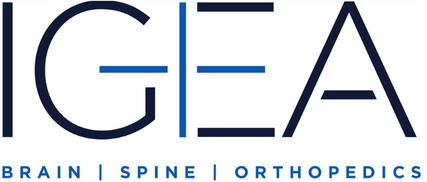ENDOVASCULAR COILING
A PROCEDURE TO TREAT YOUR ANEURYSM
An
aneurysm can be an extremely frightening condition to deal with. The effects of an untreated aneurysm can bring great anguish and pain to you and those around you. If you or someone you care for is suffering from an aneurysm, endovascular coiling can be an efficient treatment option. This neurosurgical procedure, first introduced in 1991, could be the path to a better life for you and your family.
WHAT ARE ANEURYSMS?
A brain aneurysm occurs when the walls of an artery weaken and a balloon-like structure is formed. Aneurysms come in a variety of shapes and sizes. They are usually categorized as small, large and giant. An aneurysm that is left untreated can burst and lead to a hemorrhagic
stroke, which can then cause a variety of complications including: cognitive loss, severe functional disability and even death.
HOW DOES THIS PROCEDURE WORK?
Endovascular coiling is a type of minimally invasive neurosurgery that involves no incision to the skull and minimal scarring in the area through which the procedure is performed. During the procedure, a catheter is passed through the groin and up to the affected artery. An additional microcatheter is then passed through, along with a platinum coil that will seal the aneurysm by clotting it. This clotting (embolization) will prevent an aneurysm from bursting and will keep an already-ruptured aneurysm from bleeding again. Additional coils may be used according to the size and shape of the aneurysm.
IS ENDOVASCULAR COILING RIGHT FOR YOU?
Endovascular coiling is one of several procedures used to treat aneurysms, such as microsurgical clipping and parent artery deconstruction. Neurosurgeons will often recommend it when the risk of an aneurysm rupturing is high. This procedure is generally used on older people who are not capable of undergoing an open surgery as it provides them with a shorter hospital stay and recovery time.
WHAT ARE THE RISKS?
Risks are present with every neurosurgical procedure and they are something that should be discussed in-depth with your neurosurgeon. Some neurosurgeons have expressed concerns over the likelihood of later bleeds in an aneurysm and recanalization. It’s important to understand that endovascular coiling may not be successful in some patients and could lead to further complications such as stroke and aneurysm rupture during the procedure.
ARE YOU ELIGIBLE FOR ENDOVASCULAR COILING?
A series of diagnostic exams and evaluations will be performed in order to be considered for endovascular coiling. These exams will include medical history evaluation, physical examinations, and screenings that will determine the size, shape and location of your aneurysm.
TAKE YOUR FIRST STEP TO A HEALTHY LIFE TODAY
Find out if endovascular coiling is the right procedure for you with the help of our IGEA Brain, Spine & Orthopedics neurosurgeons. Contact our main office in New Jersey at 866-467-1770 to schedule a consultation.

